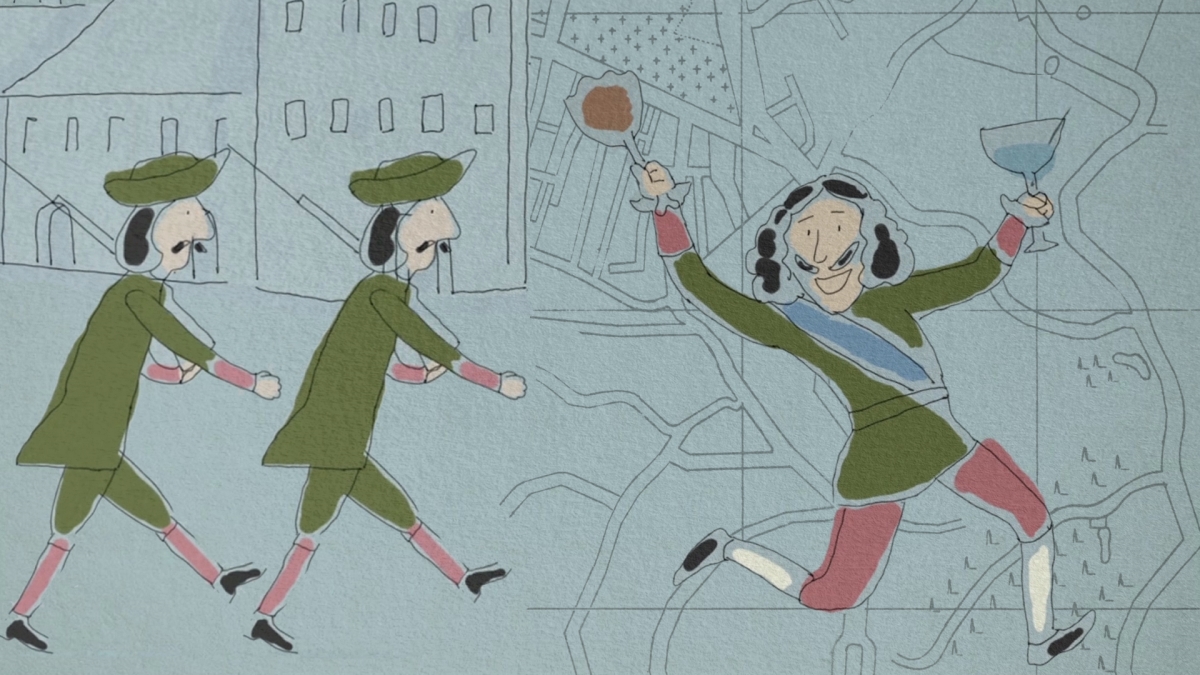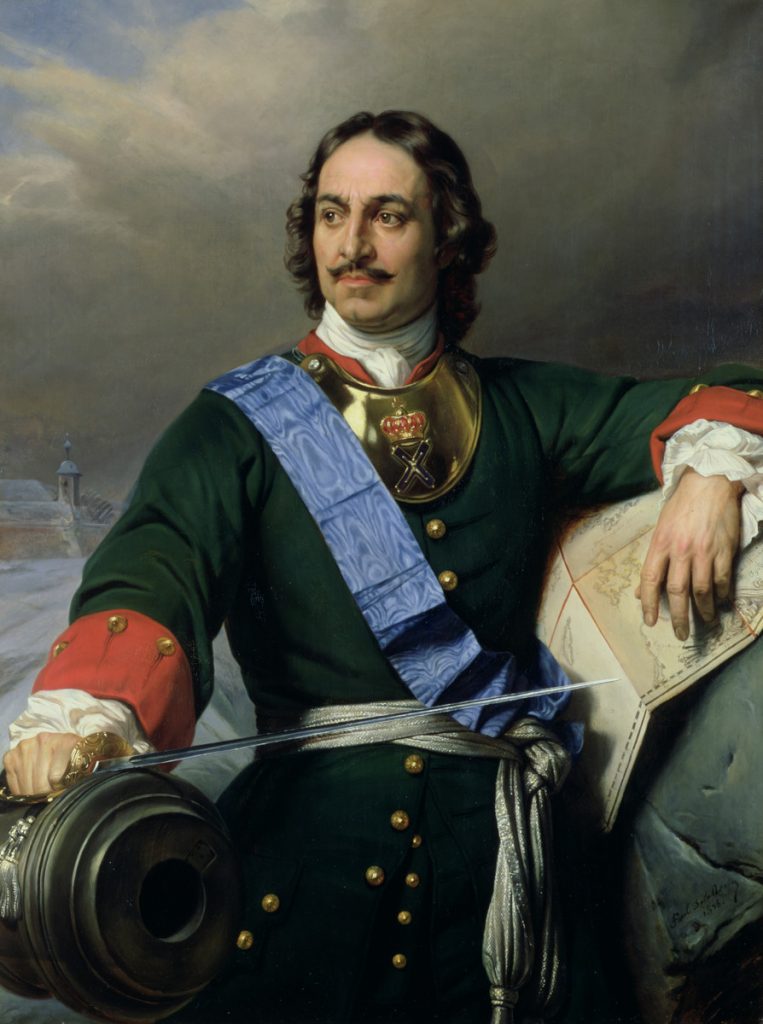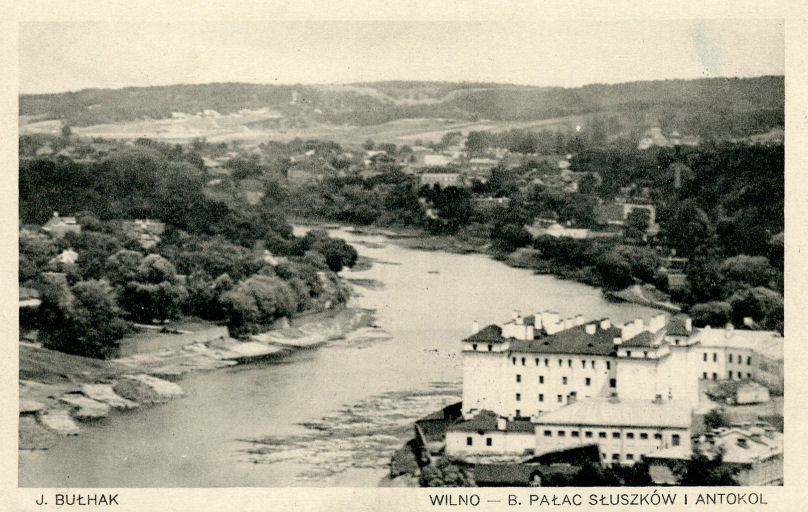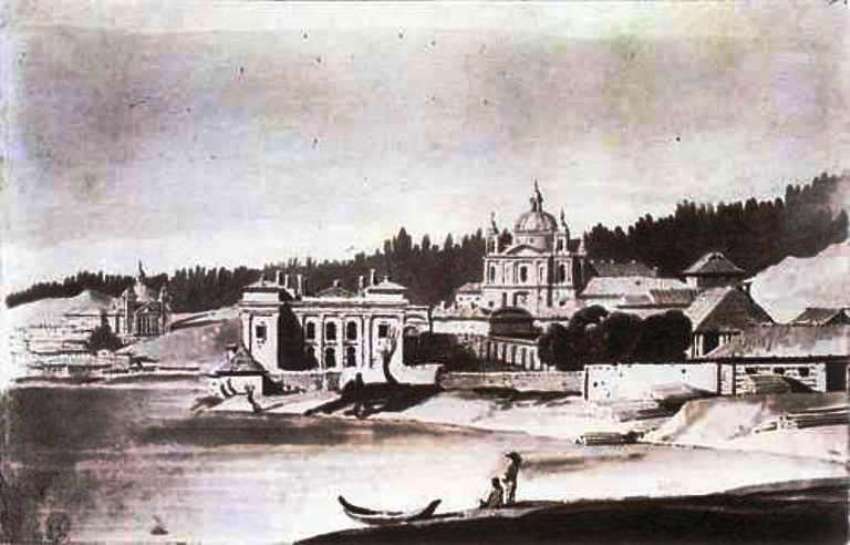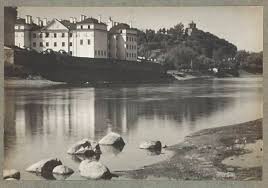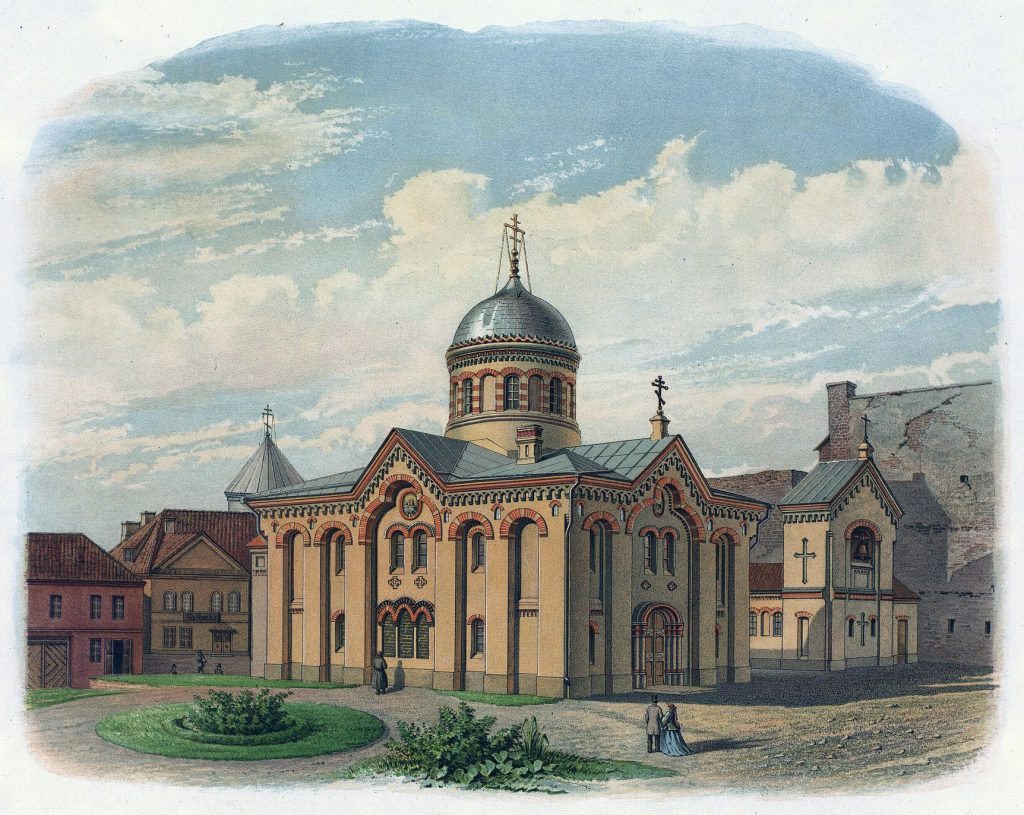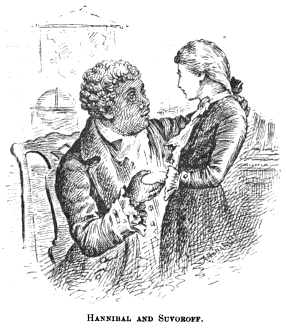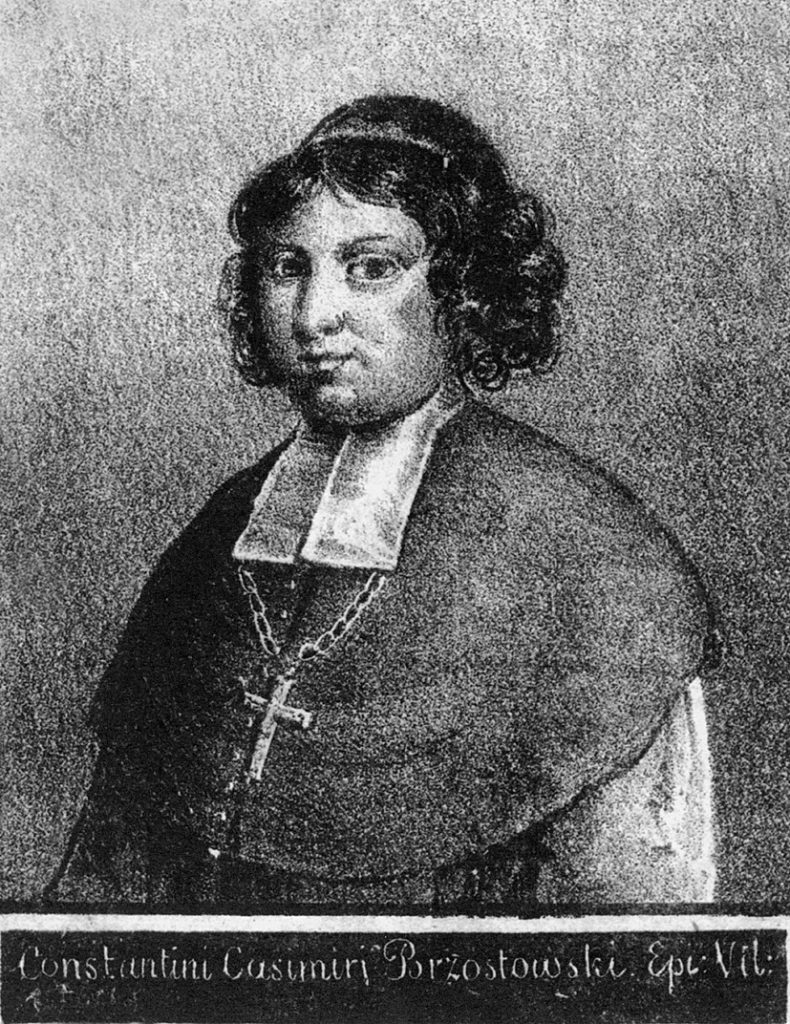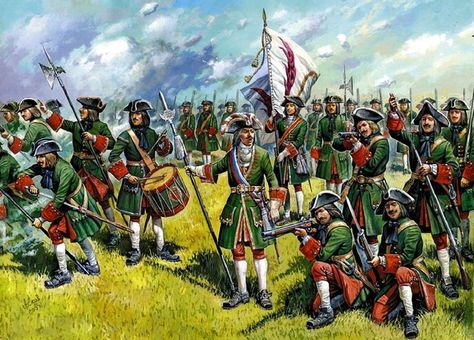Peter the Great in Vilnius: a Month of Anxiety and Terror
On 19 July, 1705, Tsar Peter the Great of Russia arrived in Vilnius. The main purpose of his visit was the coordination of military actions of the Russian troops against the Swedes in the territories of Livonia and Poland. The Great Northern War had been raging since 1700 and the united forces of Saxony, Denmark, the Polish-Lithuanian Commonwealth, and Russia fought against Sweden.
Tsar Peter the Great planned a major military operation, therefore the Russian army entered the territory of the Grand Duchy of Lithuania in late 1704.
Solemn welcome in a miserable city
The municipal officers and judges of the Lithuanian Tribunal greeted the tsar with bread and salt. However, one of his ministers did not deem it sufficient and he Lithuanians: “Why do you regard Augustus your king? Submit to our tsar!”
Do You Know?
The exact place of residence during his stay in Vilnius remains unclear. Sources name several places, but the tsar most likely resided in the building of the Lithuanian Treasury, near the Townhall Square. Russian troops were stationed at the Slushko Palace standing by the river.
Little is known about the state of Vilnius at the time, but the city undoubtedly had suffered greatly from the war. In February, 1705, an envoy of the Queen of England stayed in Vilnius and reported the following: “I cannot express the suffering I have seen here. The devastation of war has doubled the poverty that citizens endure even in peace. Nobles joined one of the warring sides, fled to lands unburdened by war or retreated into their country estates, so as to be as far as possible from the theater of war, leaving their houses in Vilnius to utter ruin. Townsfolk live in worthless wooden slums that are so common in these lands, however the churches of the Jesuit and other orders are fairly well kept, their design indicates that the city once prospered.”
Objects of interest: churches and the university
Judging by his letters, Peter the Great led an easy lifestyle during his stay in Vilnius. In almost a month, he dictated only 24 letters and orders, averaging at one a day. The tsar spent most of his time visiting churches and monasteries. As legend has it (though no known source can confirm it) he baptized the great-grandfather of the Russian poet Alexander Pushkin in the Orthodox St Paraskeva Church.
“
The tsar spent most of his time visiting churches and monasteries. As legend has it (though no known source can confirm it) he baptized the great-grandfather of the Russian poet Alexander Pushkin in the Orthodox St Paraskeva Church.
Most of the Basilian monks fled Vilnius the moment they learned that the tsar was approaching. They knew Peter the Great abhorred the Basilians, who acknowledged the supremacy of the Roman Pontificate. What’s more, they had heard about the atrocities in Polotsk where he murdered one Basilian with his own hands, while his companions killed another four. The Greek Catholics of Vilnius, however, were spared of violence. Moreover, several Orthodox men once attended their Mass and sang church hymns, after the ceremony Basilians treated them with beer and vodka.
Meanwhile, the end of the academic year was approaching at Vilnius University. The ceremony was traditionally held on 31 July, the day of St Ignatius Loyola, the founder of the Jesuit Order. University management learned that the tsar would like to witness the ceremony and prepared an imposing throne for him. Peter, however, chose to sit on a simple wooden bench. Aiming to please the ruler, the ceremony was held in Polish instead of the usual Latin. Once the festivities and light lunch came to a close tsar promised to show favour to the University.
Gushes of alcohol and blood
While in Vilnius, Peter the Great also took part in a number of grand parties arranged by some of the top Lithuanian officials, including Grand Chancellor Karol Stanisław Radziwiłł, Grand Hetman Michał Serwacy Wiśniowiecki, Field Hetman Grzegorz Ogiński, Treasurer Ludwik Pociej, and others.
“
At one ball, tsar pressed all the participants to drink by toasting to the Republic and the health of King Augustus II and his own. Later a conflict broke out among two inebriated Lithuanians. Peter watched the brawl visibly thrilled and forbade to separate them until blood was shed.
At one ball, tsar pressed all the participants to drink by toasting to the Republic and the health of King Augustus II and his own. Later a conflict broke out among two inebriated Lithuanians. Peter watched the brawl visibly thrilled and forbade to separate them until blood was shed.
The Bishop of Vilnius Konstanty Brzostowski also met the tsar. Customarily, he wished luck in fighting the common enemy ‒ the Swedes. Tsar offered him a drink, but he refused, lamenting his poor health and thus disappointing Peter, but tsar’s mood dropped completely after the bishop mentioned the Basilians killed in Polotsk. Only the intervention of Grzegorz Oginski dowsed the emerging conflict that would have had consequences on the wellbeing of Catholic Church in Vilnius.
Marauding Russians in the streets of Vilnius
The main units of the Russian army arrived in Vilnius on July 26. They settled over a wide area, ranging from St. Stephen’s Church to what is now the Lukiškės Square. Additionally, the camps were built at the current Kalvarijų Street and between the present-day Green Bridge (on the left side of Neris) and Antakalnis.
“
Vilnans were obliged to maintain Russian troops. House owners or their residents had to supply 140 kg of rye and 5 kg of groats. In addition to that, some citizens housed and fed the troops or paid a tax instead. Nevertheless, city officials kept receiving numerous complaints about looting Russians.
Vilnans were obliged to maintain Russian troops. House owners or their residents had to supply 140 kg of rye and 5 kg of groats. In addition to that, some citizens housed and fed the troops or paid a tax instead. Nevertheless, city officials kept receiving numerous complaints about looting Russians. Peter the Great ordered his officers and nobles to shave their beards and wear Western-style clothing and wigs. But, as a contemporary noted, “foreign clothes did not change their innate inclination to robbery.”
Russian soldiers exercised daily, filling the city with the sound of rifle volts and explosions. Peter commanded the entire Russian army, but during his stay in Vilnius he was also the captain of Preobrazhensk infantry regiment. Once he arranged a small parade by leading his corps from the Rūdninkai Gate through the city centre.
According to historical sources, lightning struck the Russian tents several times and killed or maimed several men. Contemporaries maintained that it was the hand of God, a revenge for the Basilian monks killed in Polotsk.
The Russian troops left Vilnius on 15 August after the news had reached Peter I about a battle near Jelgava, in what is now Latvia, where the Russians had been defeated. Peter the Great marched to Livonia immediately to strengthen his forces in Livonia. Otherwise, Russians would probably have remained in Vilnius at least until the next spring.
Mindaugas Šapoka
